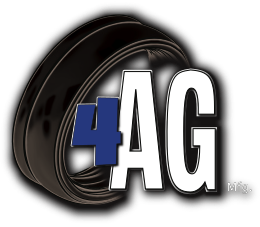Check Soil Before Planting Seeds
During the spring season, when the land is too damp or muddy, farmers should not plant their seed. When this happens on a regular basis for a few years, the land may become unfit for planting crops. Even if you try to speed up the process of planting the grain, the farm equipment row-units will cause additional furrow opener side wall smear and compaction.
Even if cutting-edge technology is utilized to plant and develop crops and grains, the technology has its own set of limitations and bounds. As a result, increasing the field compaction will have a direct detrimental influence on grain output. Farmers are aware that sidewall compaction is undesirable, and it is particularly prevalent in wet springs known for muddy and soggy fields. Even if you use a proper tillage closing wheels with your planter, sidewall compaction may still occur, making it difficult for the grower to maximize productivity. It is obvious that compaction can cause uneven grain emerging within the field, resulting in uneven pollination and low yield and maturation.
According to a recent survey in the United States, more than 48% of farmers say that delayed planting is the most important element when planting grains, and that it has an impact on both the crops and the profitability.
Sidewall compaction is a bigger thing
Aside from deep soil compaction, another challenge that farmers confront is that planting in moist conditions can create micro-compaction of furrow sidewalls. When sidewall compaction occurs, the root ball becomes compromised, resulting in decreased crop yields. However, when the weather improves and becomes dry before seed plantation, the sidewall compaction problem can be lessened. Because of the smeared sidewall and inappropriate soil compaction, the roots may be forced to grow, unable to stretch out in an effort to enhance nutrient uptake.
How do you know if your soil is too wet for planting?
There are several methods for determining if the fields are too muddy for seed plantation, including the ones listed below:
Take some soil from the depths of the field where you wish to put the seed in your hand. Try squeezing the earth in your fist now. If the dirt clings to your palm due to excessive moisture, it is too damp for seed planting.
Gather some dirt from the field and roll it into a ball. Then, from a height of around waist height, drop or hurl it to the ground. The field may be excessively damp if the ball remains whole or breaks into only a few pieces.
Take a peek at your farm's planter. If soil is accumulating on the tires, gauge wheels, or germinator closing wheels, the soil is likely very moist and muddy to plant. Aside from that, you should check the seed furrow for similar indicators of soil spreading and sidewall compaction on a regular basis.
Check the sidewall compaction in addition to the muddy field conditions. Dig across the seed furrow to accomplish this. If you notice a broken V-shape wall, the soil may not be suitable for planting and may be excessively damp. The seed furrow may not close correctly or there could be an opening left in wet conditions.
You need closing wheels for seed plantation. Before planting check the soil condition if it is too wet. For your planting equipment, see us at 4ag Manufacturing in OKC.

